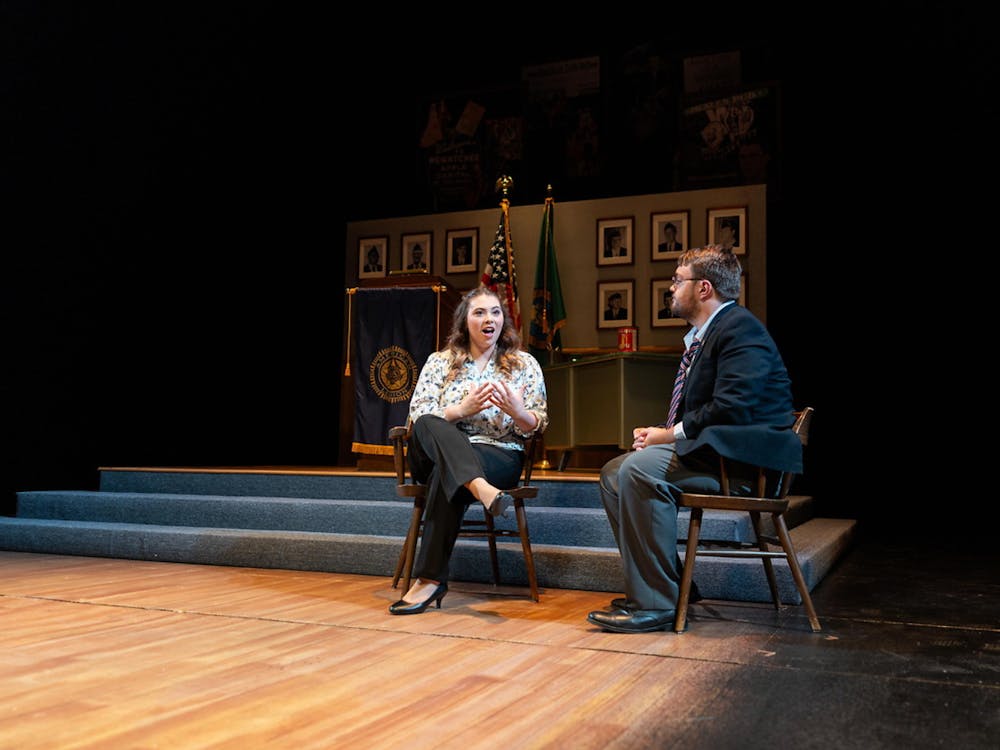In the past two Kenneth Branagh Poirot films, adapted from classic Agatha Christie novels, the location is marvelous and the murder is mysterious. “A Haunting in Venice” is no different, but I don’t remember a ghost in the first two films.
Walking into a movie marketed as both horror and thriller leaves a lot to the imagination. Will there be ghosts? Is the ghost a murder suspect? How real is Branagh’s mustache?
The opening scenes of “A Haunting in Venice” deliver the audience directly into where Branagh wants them to be. The combination of amazing costume design, music choice and insight into Poirot’s daily life pulls the audience out of their seats and into the water-surrounded streets of Venice.
The tiled roofs, canal boats and pigeons all make appearances along with wool three-piece suits and Glenn Miller’s swinging band in the background.
After Poirot’s slow morning, Tina Fey enters as Ariadne Oliver, a murder mystery writer and longtime friend of Poirot who mirrors Christie in an attempt to talk the retired detective back into his natural habitat following a mental lull that pushed the famed private eye into the shadows.
At this point, all of the memorable characters have been introduced, and we’re not even to the main location. A litany of characters appear after the 10-minute mark of the film, but they all seem to drain away as you walk out of the dark theater.
After arriving at a seance that Poirot is attempting to disprove, the horror and the thriller start at the same point. Through a series of unanswered events, a murder takes place, the doors are locked and Poirot is back.
Strap in for long interview scenes that prove the accented detective is smarter than the average audience member. At the same time, be prepared for eerie sounds and visuals that make the characters and viewers question their sanity.
Sounds and sights of children not there affect both Poirot and the audience in ways that are smartly intertwined into the motions of the characters.
The true sticking point of the movie lands in the cinematography. Branagh once again works with Haris Zambarloukos as his cinematographer, continuing a partnership that has enhanced the three-film series.
During a time of confusion for both the audience and Poirot, the Belgian detective walks toward the camera, which then flips upside down to follow him the length of the hallway. Shots like this show the thoughtfulness of camera placement and movement throughout the film that supports the well-written placement and dialogue of the characters, especially of Poirot.
Through a series of scenes taking place in a small bathroom, horror comes alive. The coveted mirror jump scare makes an appearance just as Branagh is displaying his best acting.
Enjoy what you're reading?
Signup for our newsletter
Moments like this are what make “A Haunting in Venice” unlike other detective films. What other situation would have Poirot talking to a ghost to find the answer to an unsolved murder?
“A Haunting in Venice” holds itself to what it said it would be, a three-course murder mystery with a side of horror. The characters may fall flat, but the story and the setting are just what you’d expect from an Agatha Christie story.
Rating: 8/10




